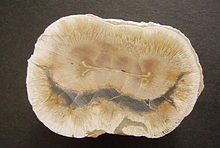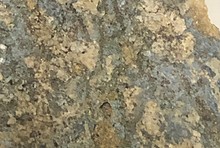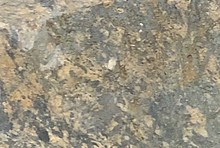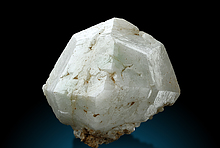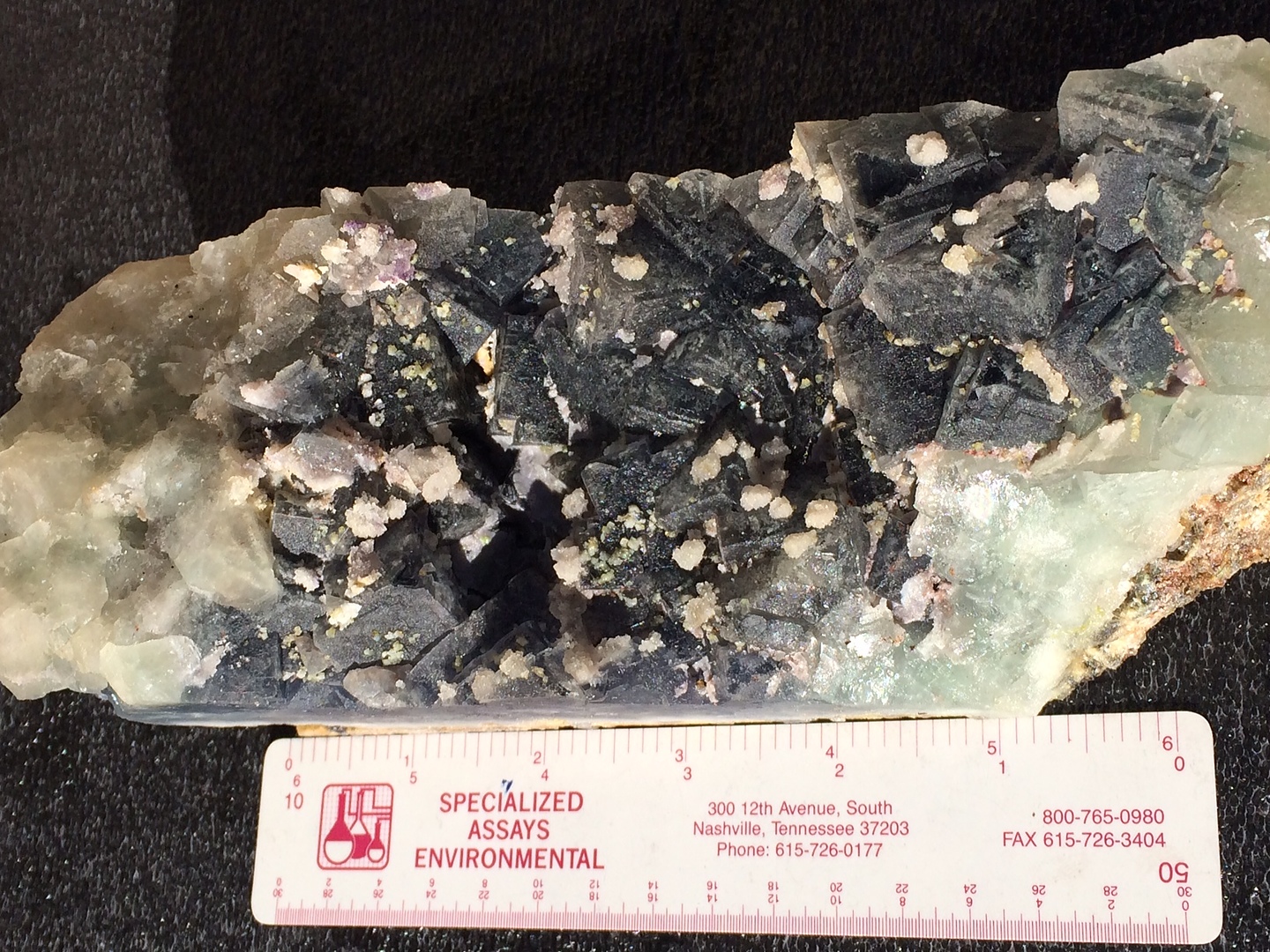Home PageAbout MindatThe Mindat ManualHistory of MindatCopyright StatusWho We AreContact UsAdvertise on Mindat
Donate to MindatCorporate SponsorshipSponsor a PageSponsored PagesMindat AdvertisersAdvertise on Mindat
Learning CenterWhat is a mineral?The most common minerals on earthInformation for EducatorsMindat ArticlesThe ElementsThe Rock H. Currier Digital LibraryGeologic Time
Minerals by PropertiesMinerals by ChemistryAdvanced Locality SearchRandom MineralRandom LocalitySearch by minIDLocalities Near MeSearch ArticlesSearch GlossaryMore Search Options
The Mindat ManualAdd a New PhotoRate PhotosLocality Edit ReportCoordinate Completion ReportAdd Glossary Item
Mining CompaniesStatisticsUsersMineral MuseumsClubs & OrganizationsMineral Shows & EventsThe Mindat DirectoryDevice SettingsThe Mineral Quiz
Photo SearchPhoto GalleriesSearch by ColorNew Photos TodayNew Photos YesterdayMembers' Photo GalleriesPast Photo of the Day GalleryPhotography
╳Discussions
💬 Home🔎 Search📅 LatestGroups
EducationOpen discussion area.Fakes & FraudsOpen discussion area.Field CollectingOpen discussion area.FossilsOpen discussion area.Gems and GemologyOpen discussion area.GeneralOpen discussion area.How to ContributeOpen discussion area.Identity HelpOpen discussion area.Improving Mindat.orgOpen discussion area.LocalitiesOpen discussion area.Lost and Stolen SpecimensOpen discussion area.MarketplaceOpen discussion area.MeteoritesOpen discussion area.Mindat ProductsOpen discussion area.Mineral ExchangesOpen discussion area.Mineral PhotographyOpen discussion area.Mineral ShowsOpen discussion area.Mineralogical ClassificationOpen discussion area.Mineralogy CourseOpen discussion area.MineralsOpen discussion area.Minerals and MuseumsOpen discussion area.PhotosOpen discussion area.Techniques for CollectorsOpen discussion area.The Rock H. Currier Digital LibraryOpen discussion area.UV MineralsOpen discussion area.Recent Images in Discussions
Techniques for CollectorsCleaning fluorite crystals with “accelerated” ammonium bifluoride.

17th Nov 2014 16:50 UTCStephen Pegler
I found a big chuck of dark blue and pale green fluorite in a vein at the fluorite mines at the base of the Harquahala Mountains in Arizona. I thought I just had an everyday big chunk of colorful but massive fluorite. I sawed off both sides of it with the idea maybe just polishing it as bookends or something. I find it interesting to slice through the massive vein material that I find in Arizona to see all the complex deposition layers as the constantly changing hydrothermal fluids blast through the vein and deposit different minerals. Some of these vein slices make interesting and attractive mineral specimens by themselves, especially the ones with layers of amethyst or colorful fluorite. I like to backlight these in my display cabinet.
After I sliced the big chunk of fluorite, I saw the outline of 1 to 2 cm dark blue cubic crystals - then I wished I hadn’t sawed it. They were covered with a thick layer of calcite and another thin layer of what turned out to be some sort of amorphous quartz. Getting rid of the calcite was easy and not too dangerous (dilute relatively cheap hydrochloric acid (HCl) from the pool supply store). After getting rid of the calcite layer, there were nice cubic fluorite crystals but totally covered with dirty looking amorphous quartz (or perhaps calcedony or opal). Not a very attractive specimen, certainly not worth displaying, see the Before Quart Removed photo.
I have previously removed a similar quartz coating from a big specimen of octahedral crystal fluorite that I dug up north of Wickenburg, AZ. For that specimen, I took the direct approach - concentrated hydrofluoric acid (HF). I have the safety gear and the HazMat training to handle the stuff but it’s not fun suiting up in a Tyvek, boots, two layers of gloves, and a full face respirator.
Also, HF is relatively expensive compared to HCl. Since this was a big specimen, 12” x 9” weighing about 40 lbs, it took a LOT of expensive HF. The HF worked great and now I have a nice specimen of very dark purple 0.5 cm octahedral fluorite crystals, I'll post these photos on a separate message so this doesn't get too long (unfortunately I don’t have a before photo but it was just a big yard rock before cleaning). But DO NOT DO this kind of cleaning at home, handling HF is just plain plain scary dangerous.
This time I thought I would try something a little safer, ammonium bifluoride (NH4.F2), which also has the capability of dissolving quartz, abet a lot slower than HF. I made up a 20% solution of NH4.F2 and submerged the crystal covered surface in the solution. Weeks later, I checked the specimen and the quartz layer looked a little thinner but it was still there. This stuff is SLOW!
I wanted to speed things up but not go back to handling concentrated HF with all its dangers. I have done work in the petroleum industry and I know they use a blend of NH4.F2 and hydrochloric acid to dissolve “mud” in the well bore, which is bentonite drilling mud and shale cuttings. See
http://www.trican.us/pdf/FluidTechnology/AcidFluid/MDA%20HCl-HF.pdf
Basically this blend forms dilute HF in situ in the stripping solution without having to handle the more dangerous concentrated HF. The solution is still dangerous, just not as bad as handling straight HF. The solution is still dilute HF so you should have the calcium gluconate salve handy in case you get any on your skin.
Of course you need to use gloves, Tyvek, face shield, etc. like you would when you use HCl. Again, don’t do this indoors at home. Maybe outdoors if you have had some good chemical handling training and equipment. You don’t have the terribly dangerous HF fumes to deal with but you still have the still somewhat dangerous HCl fumes from the pool acid to deal with before you dilute it. Don’t even think about putting the solution in a glass container unless you want it to turn into a blob of acidic silica gel. Everything needs to be plastic. Also, keep in mind that you have to neutralize and properly dispose of this solution when you are done with it.
Anyway, the blend of NH4.F2 and HCl did a great job of dissolving the quartz layer off of the cubic fluorite specimen in a reasonable period of time without damaging the fluorite. After a little more than a week, the quartz layer was gone except in one small area that must have not been in contact with the cleaning solution because of an air bubble. See the After Quartz Removed photo.
The cubic crystal surfaces under the quartz layer were frosted, as I understand is typical under a quartz layer. Certainly not a nice glassy surface but least it looks better that the original unattractive specimen. I guess it was worth the effort to get the quartz off. I’m not sure what the white balls of minerals are that remain on the fluorite cubes. Perhaps larger quartz crystals that didn’t dissolve? Perhaps white fluorite? I don’t have enough magnification in a hand lens to determine what they are. I’ll see if I can get a good photo of them with my low budget Chinese USB microscope.
Anyway, I’m done cleaning the specimen. I’ll leave the white balls of whatever on the fluorite to remind me of the original provenance of the specimen. I think an important rule of mineral cleaning is to “quit while you are ahead”.
Perhaps some purists might disapprove of my mineral cleaning efforts because it’s not “natural” but I look at it as peeling back some of the later deposition layers in the vein to get back to and expose an interesting earlier crystallized layer. Rather than “cleaning”, perhaps I should say that I am “exposing” a layer of crystals. After all, at one time, these were just a pristine layer of cubic fluorite crystals that ended up being covered by other less attractive minerals as the composition or temperature/pressure of the hydrothermal fluids changed.

17th Nov 2014 16:57 UTCStephen Pegler
Here are photos of the large fluorite specimen previously cleaned using HF. To repeat, don't do this at home. HF is dangerous.
18th Nov 2014 08:51 UTCRock Currier Expert

18th Nov 2014 16:23 UTCStephen Pegler
Unfortunately, I didn't measure the amount of HCl (from "pool acid" which is easy to find in AZ) that I added to the NH4.F2 solution. I just drove the pH down to less than 1.0. I just used pH strips, I have a decent pH meter but I figured that would be the last pH measurement it would take since it has a glass bulb :-) . I guessed that at such a low pH there should be a lot of active hydrofluoric acid in the solution.
I agree with you, a 5% or 10% weight/volume solution of ammonium bifluoride plus hydrochloric acid probably would do a great job of removing quartz and be more cost effective. Pool acid is cheap in Arizona. The 20% solution that I used removed a large amount of quartz from the fluorite specimen and I think it may still be active. Now I'm using it on some not so great amethyst specimens to see if it will remove a white quartz layer covering the little amethyst crystals. I'll let you know how well this used solution is working. I'll also check the pH of the used solution today and post it tonight. Maybe add more HCl? I'm guessing that the large amount of ammonium bifluorite in the solution is kind of like a "buffer" that can create more hydrofluoric acid by adding more hydrochloric acid, but that's just a guess.

18th Nov 2014 17:08 UTCRyan Allen

18th Nov 2014 21:21 UTCStephen Pegler
btw, I love using Super Iron Out. In most cases, it does a better job removing iron oxide stains than hydrochloric acid and it is much easier to rinse off without leaving a yellow iron stain like hydrochloric acid does. SIO just smells bad but works good.
18th Nov 2014 22:28 UTCRock Currier Expert
I have thought for some time to amend my article on cleaning quartz and add something about "activated" bifluoride use for removing silica rich coatings. I've just never gotten around to doing enough experiments to understand in practical terms just how best to advise people. I can certainly talk in terms of PH, but hardly any one has a Ph meter or even Ph indicator strips, and I would like to offer a formula of adding so much sodium bifluoride and so many ML of hydrochloric acid to a gallon or liter of water to get a solution that would be effective. But I can understand exactly what you have done thus far and the reasons for it. I appreciate you bringing it to the attention of the cleaning and preparation forum.

19th Nov 2014 00:37 UTCAlfredo Petrov Manager

19th Nov 2014 01:04 UTCTom Tucker

19th Nov 2014 02:09 UTCStephen Pegler
"In solid , each ammonium cation is surrounded by four fluoride centers in a tetrahedron, with hydrogen-fluorine hydrogen bonds present between the hydrogen atoms of the ammonium ion and the fluorine atoms. Solutions contain tetrahedral + cations and linear − anions."
My experiences with bifluoride solutions is that it is very slow at dissolving quartz. The petroleum industry has found that adding acid speeds up the solution of silicates in the well bore. I guess I'm just impatient to see results.

19th Nov 2014 02:15 UTCAlfredo Petrov Manager

19th Nov 2014 05:06 UTCStephen Pegler
As requested, here are some possible formulations for the activated ammonium bifluoride silicate removing solution. We do need to test these solutions to be sure that they are really effective in a reasonable period of time.
Based on what I can best figure out what the petroleum industry is using for “mud dissolving acid”, I came up with the following mix ratios for ammonium bifluoride (ABF) and concentrated 30% hydrochloric acid (HCl) to generate hydrofluoric acid (HF) in the solution. Note that some Home Depot type pool acid can have as low of a concentration of 15% so check the label and adjust the dosage accordingly.
U.S. units:
2.5% ABF solution, 0.21 lbs ABF and 8 fluid ounces of HCl per gallon of water. Resulting HF concentration in the solution = 1.5%
5.0% ABF solution, 0.42 lbs ABF and 16 fluid ounces of HCl per gallon of water. Resulting HF concentration in the solution = 3.0%
10% ABF solution, 0.84 lbs ABF and 18 fluid ounces of HCl per gallon of water. Resulting HF concentration in the solution = 6.0%
Metric units:
2.5% ABF solution, 25 grams ABF and 60 ml of HCl per one liter of water. Resulting HF concentration in the solution = 1.5%
5.0% ABF solution, 50 grams ABF and 120 ml of HCl per one liter of water. Resulting HF concentration in the solution = 3.0%
10% ABF solution, 100 grams ABF and 140 ml of HCl per one liter of water. Resulting HF concentration in the solution = 6.0%
If some of the above solution formulations prove to be effective and reasonably fast at dissolving hard quartz from mineral specimens, these mixes should be much more cost effective that using straight high concentrations of ABF or concentrated HF, not to mention MUCH safer that using concentrated HF. I don't know what that big fluorite specimen is worth that was in the photos that I posted but I probably spent too much money on HF removing the quartz.
Please keep in mind the following:
1. I haven’t done any chemical equilibrium calculations. I just converted units from the http://www.trican.us/pdf/FluidTechnology/AcidFluid/MDA%20HCl-HF.pdf website. Anybody want to do some real chemistry work to better define what is happening in these solutions?
2. It’s getting late and I may have made a calculation mistake. Someone please check my work.
3. I haven’t tested the efficacy of any of these mixes to dissolve hard quartz but I intend to. The last ABF/HCl mix that I used had a very high 20% ABF concentration and a pH of 1.0. That worked!
4. While I think these mixes are significantly safer than using concentrated HF, the solutions still contain dilute HF and this can be very harmful to your health. Gloves, tyveks, face shield, rubber boots, etc. Rubber boots? If you drop a container of this stuff on the ground you will wish you had rubber boots on. Always assume that **** will happen. The main danger of HF is that the very small HF molecule will rapidly penetrate your unprotected skin and destroy tissue all the way down to the bone and then destroy the bone. Not a pretty sight.
5. These formulations were developed by the petroleum industry to dissolve drilling mud and cuttings. How well they will work on hard quartz coatings on valuable minerals is yet to be determined. No guarantees here.
Steve
19th Nov 2014 06:35 UTCRock Currier Expert
Probably either sodium or ammonium bifluoride would work although the Ph of the resulting solutions would undoubtedly be somewhat different.

19th Nov 2014 16:24 UTCStephen Pegler
Stephen Pegler Wrote:
-------------------------------------------------------
> I started with a 20% by weight/volume solution of
> NH4.F2 before I thought about adding HCl. I
> thought that that would be enough to do the job.
> However, results were so slow that i decided to
> try the "oil patch" method of adding HCl to the
> solution from the website
> http://www.trican.us/pdf/FluidTechnology/AcidFluid
> /MDA%20HCl-HF.pdf . That website has some mixing
> guidelines. When I get some time, I'll convert
> these ratios on that website to grams per liter
> and post them tonight.
>
> Unfortunately, I didn't measure the amount of HCl
> (from "pool acid" which is easy to find in AZ)
> that I added to the NH4.F2 solution. I just drove
> the pH down to less than 1.0. I just used pH
> strips, I have a decent pH meter but I figured
> that would be the last pH measurement it would
> take since it has a glass bulb :-) . I guessed
> that at such a low pH there should be a lot of
> active hydrofluoric acid in the solution.
>
> I agree with you, a 5% or 10% weight/volume
> solution of ammonium bifluoride plus hydrochloric
> acid probably would do a great job of removing
> quartz and be more cost effective. Pool acid is
> cheap in Arizona. The 20% solution that I used
> removed a large amount of quartz from the fluorite
> specimen and I think it may still be active. Now
> I'm using it on some not so great amethyst
> specimens to see if it will remove a white quartz
> layer covering the little amethyst crystals. I'll
> let you know how well this used solution is
> working. I'll also check the pH of the used
> solution today and post it tonight. Maybe add more
> HCl? I'm guessing that the large amount of
> ammonium bifluorite in the solution is kind of
> like a "buffer" that can create more hydrofluoric
> acid by adding more hydrochloric acid, but that's
> just a guess.

19th Nov 2014 16:37 UTCStephen Pegler
Steve
19th Nov 2014 21:46 UTCRock Currier Expert
Please keep me informed on your "activated" bifluoride tests. If after doing them you would care to write up something about your conclusions, Ill would like to add it to my article about cleaning quartz (with full credit to you of course).

20th Nov 2014 01:42 UTCStephen Pegler
Will do. I want to give the used activated ABF solution about a week+ to see if it improves the amethyst crystals. Plus I want it to use up most of the active HF before I neutralize and dispose of it. I'll probably start a new test on the Thanksgiving weekend using the most concentrated "oil patch" formulation first. I'll get photos and let you know how it goes.
I think I really do need to dig up some more quartz covered fluoride for the test, it's a tough job but somebody has to do it :-) . btw, the weather in AZ is perfect for collecting and camping. Sunny cool days and chilly nights that are good for a campfire. I don't collect in the summer unless it is at a high altitude. AZ low deserts are HOT in the summer.
Steve

20th Nov 2014 04:24 UTCDoug Daniels
I was going to try to check your calculations, but quickly came up with a problem. For your 2.5% solution, you start with 0.21 lb of ABF. You then convert to grams, which you have as 25 g. There are 453.6 g/lb, so 0.21 lb would be 95.2 g (and, really, it's not right - pounds are weight, grams are mass). I haven't done the other calculations yet - been a while since I've done chemical concentration calculations (say that three times real fast....). But, apparently the recipes work for the oil-field folk, so someone did the math; then again, we're not dealing with borehole conditions. I'll see what I come up with, or will admit it's beyond me these days.
20th Nov 2014 14:54 UTCPeter Haas
-------------------------------------------------------
> The temperature
> has dropped significantly in AZ so the solution
> temperature is much lower now, which no doubt
> affects the etch rate.
What makes you think that ?

20th Nov 2014 15:26 UTCStephen Pegler
-------------------------------------------------------
> Stephen Pegler Wrote:
> --------------------------------------------------
> -----
> > The temperature
> > has dropped significantly in AZ so the solution
> > temperature is much lower now, which no doubt
> > affects the etch rate.
>
> What makes you think that ?
Just basic chemistry. Temperatures in AZ were in the 90's and 100's, now in the 60's. Solution temperature was probably over 80F, now less than 60F.
20th Nov 2014 15:29 UTCPeter Haas
20th Nov 2014 15:31 UTCSteve Hardinger 🌟 Expert

20th Nov 2014 15:36 UTCStephen Pegler
Thank you, Steve
Doug Daniels Wrote:
-------------------------------------------------------
> Stephen-
> I was going to try to check your calculations, but
> quickly came up with a problem. For your 2.5%
> solution, you start with 0.21 lb of ABF. You
> then convert to grams, which you have as 25 g.
> There are 453.6 g/lb, so 0.21 lb would be 95.2 g
> (and, really, it's not right - pounds are weight,
> grams are mass). I haven't done the other
> calculations yet - been a while since I've done
> chemical concentration calculations (say that
> three times real fast....). But, apparently the
> recipes work for the oil-field folk, so someone
> did the math; then again, we're not dealing with
> borehole conditions. I'll see what I come up
> with, or will admit it's beyond me these days.
20th Nov 2014 21:48 UTCRoger Curry
that's not right
Rog

21st Nov 2014 00:59 UTCDoug Daniels
21st Nov 2014 02:02 UTCSteve Hardinger 🌟 Expert

21st Nov 2014 02:29 UTCAlfredo Petrov Manager
21st Nov 2014 07:58 UTCRock Currier Expert

22nd Nov 2014 06:19 UTCStephen Pegler
-------------------------------------------------------
> Sorry for insisting, but which "basic chemistry" ?
Basic chemistry, see Arrhenius equation - k = A e^{-E_a/(R T)}
(sorry, this message board doesn't have enough fonts to show this exactly correct, look it up)
Rate constant k of a chemical reaction on the absolute temperature T (in kelvin), where A is the pre-exponential factor (or simply the prefactor), E_a is the activation energy, and R is the universal gas constant
or for about every 10 degrees C, the reaction rate doubles like Rock Currier previously stated.

22nd Nov 2014 06:23 UTCStephen Pegler
-------------------------------------------------------
> But, but, Steve, we are not alone! The 2006 CIA
> Factbook says Burma and Liberia don't yet use the
> metric system either! (Someone told me Yemen
> doesn't either, but the CIA disagrees.)
Wow, I see that the good old USA is in great company as far as weight and measures go.




Mindat.org is an outreach project of the Hudson Institute of Mineralogy, a 501(c)(3) not-for-profit organization.
Copyright © mindat.org and the Hudson Institute of Mineralogy 1993-2024, except where stated. Most political location boundaries are © OpenStreetMap contributors. Mindat.org relies on the contributions of thousands of members and supporters. Founded in 2000 by Jolyon Ralph.
Privacy Policy - Terms & Conditions - Contact Us / DMCA issues - Report a bug/vulnerability Current server date and time: April 23, 2024 09:39:30
Copyright © mindat.org and the Hudson Institute of Mineralogy 1993-2024, except where stated. Most political location boundaries are © OpenStreetMap contributors. Mindat.org relies on the contributions of thousands of members and supporters. Founded in 2000 by Jolyon Ralph.
Privacy Policy - Terms & Conditions - Contact Us / DMCA issues - Report a bug/vulnerability Current server date and time: April 23, 2024 09:39:30
